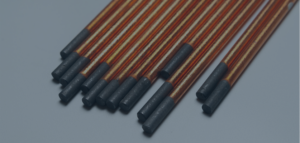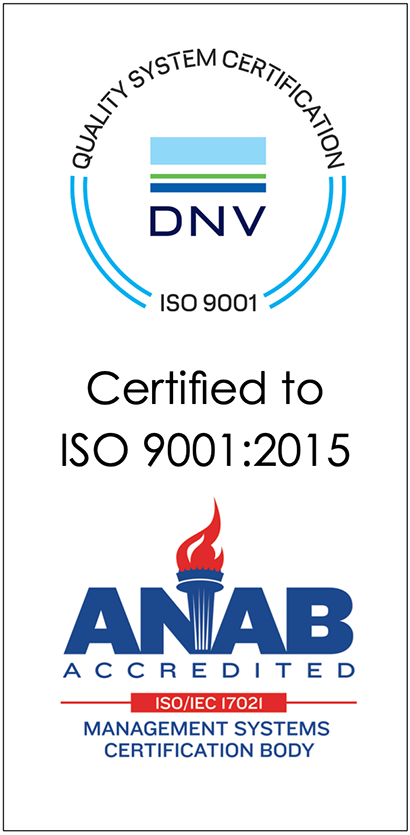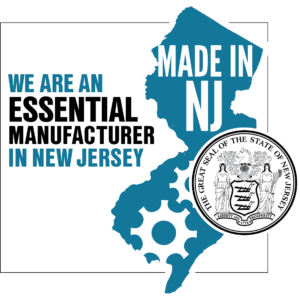Benefits of Copper Tungsten Wire Properties & Compositions
Much of the value of copper tungsten for electrical discharge machining (EDM) electrodes is the result of the unique mechanical and physical properties of the materials. For instance, copper’s high electrical conductivity and the wear resistance of tungsten wire make for a combination that optimizes manufacturability.
Different tungsten copper compositions also have an impact on EDM electrode performance. In addition, the success of the EDM process is influenced by the properties of the workpiece and the electrode materials.
Metrics for EDM Success
The choice of an electrode material ultimately depends on its ability to interact productively with the workpiece material, as well as on the particular production goal. Some common metrics for measuring the success of an EDM production job include:
- Electrode wear ratio (EWR)
- Material removal rate (MRR)
- Ra (roughness average) surface finish
Copper tungsten wire can improve EWR, because of both its innate structural integrity and its resistance to “DC arcing,” a common EDM-related frustration. The MRR, or cutting speed, is largely dependent on the interaction between material properties and machining parameters.
Material Property Effects of Copper Tungsten Wires
With its excellent thermal conductivity, copper is the portion of the copper tungsten composition that drives cutting speed. So, why not use a pure copper electrode? The answer is that electrolytic (pure) copper poses enormous challenges in manufacturability and wear rates.
However, combining copper with tungsten improves both conditions, producing a dramatically better overall performance.
Interestingly, the addition of tungsten to copper often generates a recast layer, commonly referred to as “black layer,” during the EDM process. While this layer can actually improve wear resistance, the additional buildup slightly lowers thermal conductivity and ultimately reduces MRR.
Copper Tungsten as a Composite Material
Composite materials like copper tungsten are not true alloys. Rather, they are pseudo-alloys made up of a composite of two chemically or physically disparate materials.
Traditional alloy methods, which require the pure materials to be soluble, are ineffective for copper tungsten wire. That’s because with melting points of about 1981°F (1083ºC) and 6152°F (3400ºC) for copper and tungsten respectively, the copper would evaporate before the tungsten even began to melt.
As EDM has grown in popularity as a non-traditional machining process for making dies and molds — especially in tungsten carbide and tool steel workpieces — powder metallurgists have experimented with different fabrication methods for combining copper tungsten, such as:
- Liquid phase sintering
- Metal injection molding
- Hot pressing
- Vacuum plasma spray
- Mechanical alloying
Porosity and Copper Tungsten Density
Copper tungsten electrode material is most commonly fabricated through a powder metallurgy process, in which a porous pre-sintered tungsten “skeleton” is infiltrated by liquid copper. Generally, the press-sinter-infiltrate process reduces the risk of porosity, which is a key concern for electrode manufacturers and EDM machinists because it can cause a bump in the EDM cavity.
However, a fully dense copper tungsten composite is almost impossible to fabricate. That’s because the difference in thermal contraction between solid tungsten and molten copper during post-infiltration cooling can still cause some residual porosity.
Some studies have shown that the use of nanoscale tungsten particles coated onto copper powder and a lower sintering temperature can improve the density of the final material, thus reducing the risk of pores, copper lakes, and tungsten agglomerates.
Similarly, hot pressing — a simpler and more cost effective process involving simultaneous heat and pressure — has also been noted to improve density.
Adjusting Tungsten Copper Composition for EDM Applications
In addition to different fabrication methods for improving density and microstructure, manipulating the tungsten copper composition ratio can produce specialized performance properties for EDM applications.
Generally the higher the percentage of tungsten, the greater the EWR and cutting stability, but at the expense of slower cutting speeds. Conversely, the more copper, the better the surface finish and MRR, but with reduced EWR.
The most standard composition of copper tungsten is 30% Cu and 70% W. However, the composition can be customized based on the application, such as 50% W and 50% Cu for sealed switches. For spot welding electrodes, 89% W and 11% Cu is common.
EDM Process Parameters to Improve MRR
Because EDM is a thermal process, you could logically infer that increasing thermal conductivity will increase MRR. However, it’s a challenge to find the “sweet spot” where conductivity is high enough to improve cutting rates, but not so high as to leave the spark gap empty of heat.
Luckily, there are empirical models for determining process parameters as they relate to material properties, helping to identify the process parameter sweet spot that will efficiently produce on-spec parts.
More crucially, studies have shown that thermal conductivity alone does not influence MRR. Instead, the influence of thermal conductivity is realized only in conjunction with peak current.
That means the combination of copper tungsten’s thermal conductivity and a stronger, more impactful spark would make for faster (albeit not pretty) material removal. Note, however, that just increasing peak current without also increasing conductivity would compromise surface finish, due to the more explosive, uneven burn.
Pitting and Copper Tungsten’s DC Arc Resistance
Another issue in EDM is pitting, which occurs when sludge from worn EDM electrode material and removed workpiece material is not properly filtered out of the dialectic fluid.
- When enough particulate builds up between electrode and workpiece, it can convert the AC current to a DC current.
- Acting like an electrode, the waste attracts a spark, which then arcs across the fluid and creates a concentrated discharge, ultimately causing a pit in the material.
This DC arcing often goes undetected until pitting has occurred. Since the most common cause is poor flushing conditions, machinists look to one micron filtration systems and software that can respond to the detection of DC current and adjust cutting parameters accordingly.
Sometimes, however, poor flushing conditions can be hard to avoid, especially for particularly difficult burns. In these situations, a copper tungsten electrode can be hugely beneficial.
Pure copper’s structural integrity can produce exceptional surface finishes, even without specialty polishing circuits. Its general resistance to DC arcing combined with the high melting point and density of tungsten make for an electrode with high wear resistance even under poor flushing situations.
Copper Tungsten’s Optimal Performance in EDM
In EDM, the structural integrity of a material determines its ability to withstand the thousands of tiny sparks the material will be subjected to and, ultimately, the quality of the workpiece. Therefore, an electrode material with the right combination of properties can mean the difference between a job well done and a job scrapped.
That’s why copper’s high electrical conductivity and arc erosion resistance in combination with the excellent thermal conductivity and wear resistance of tungsten make for optimal performance as an EDM electrode material.
To learn more about copper tungsten and why you might choose it for your EDM-related applications, download our report on resistance welding electrode materials.






